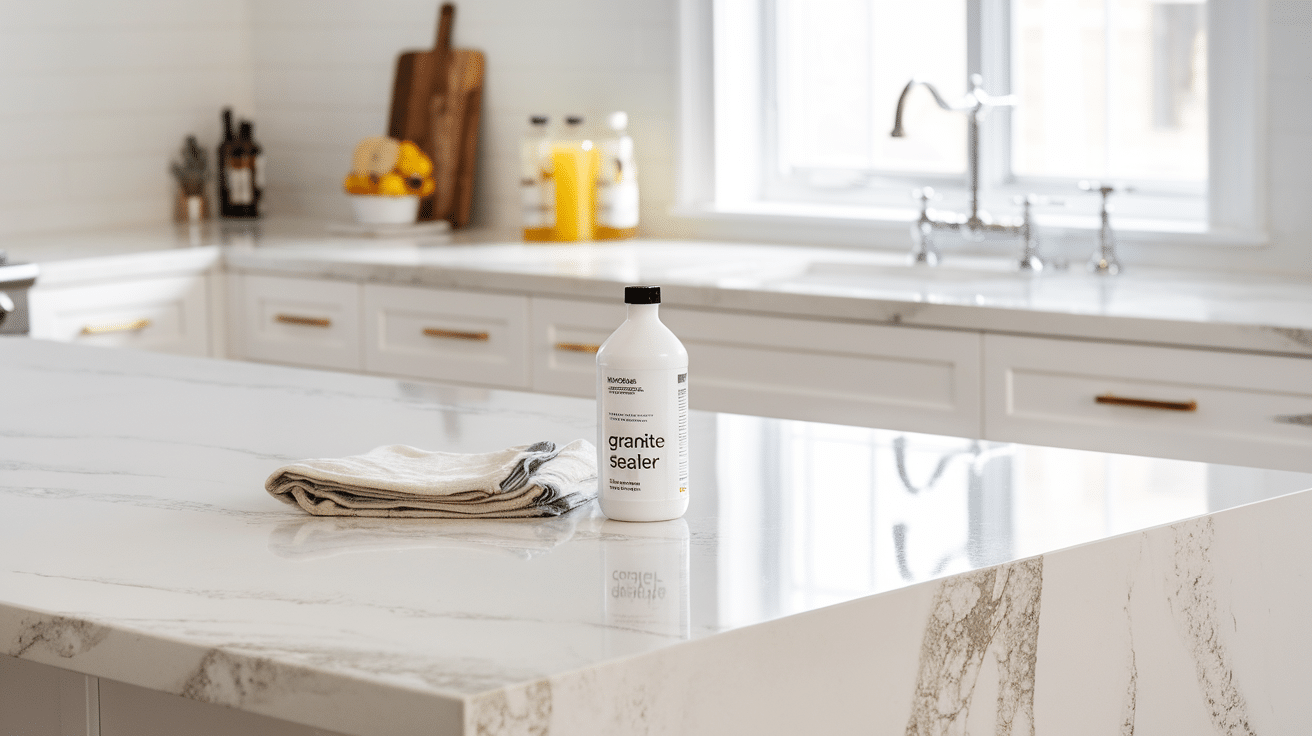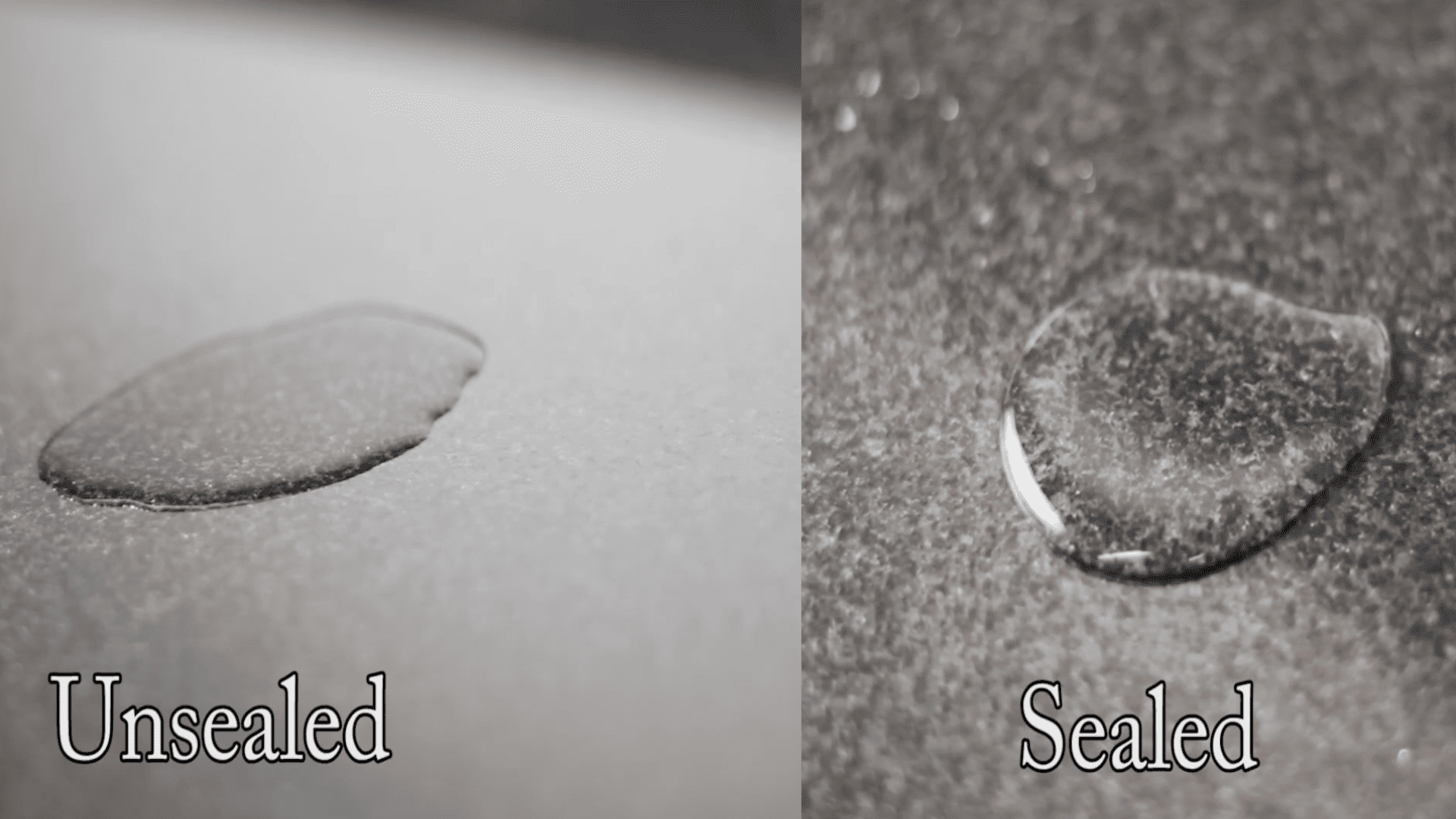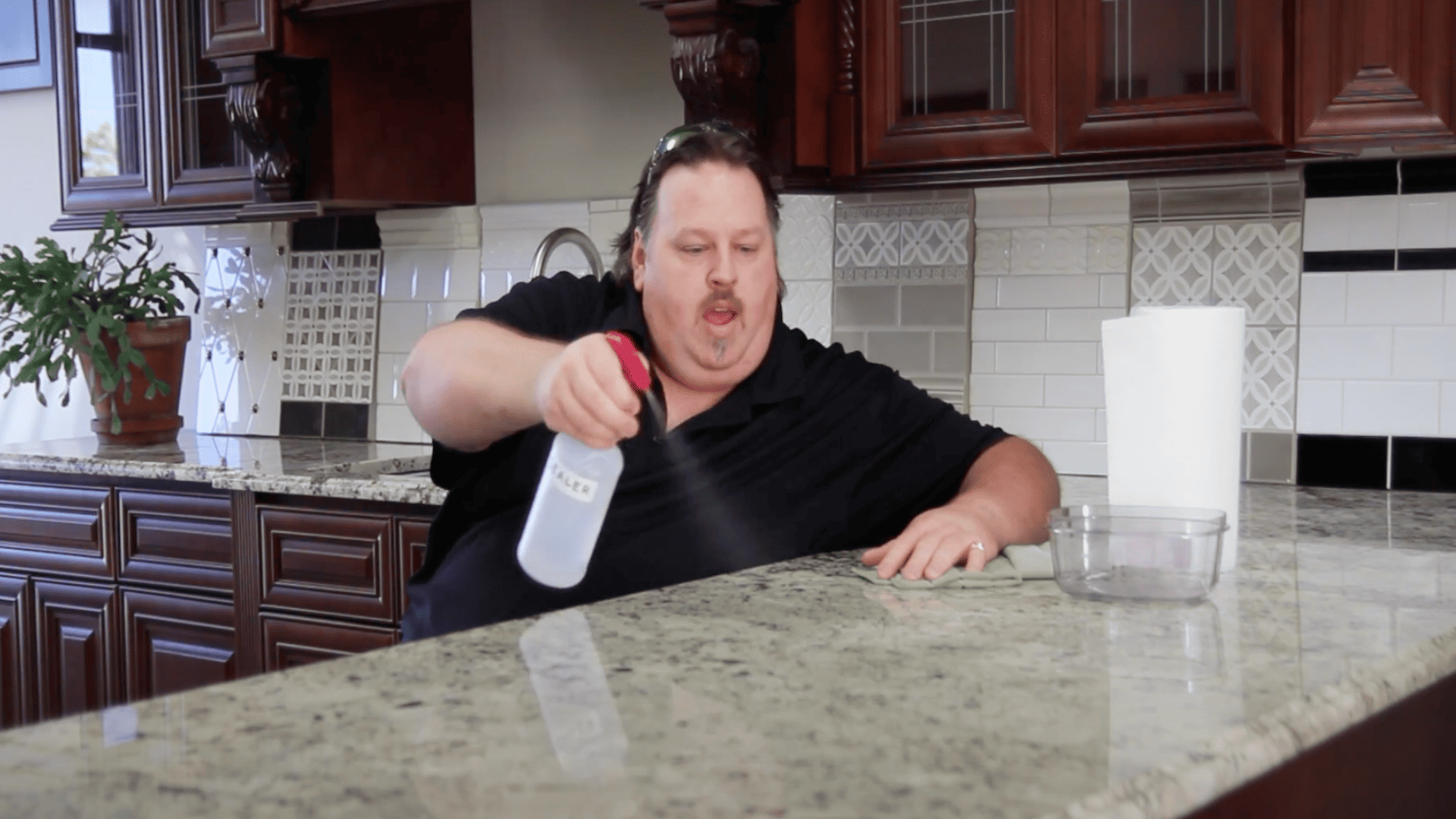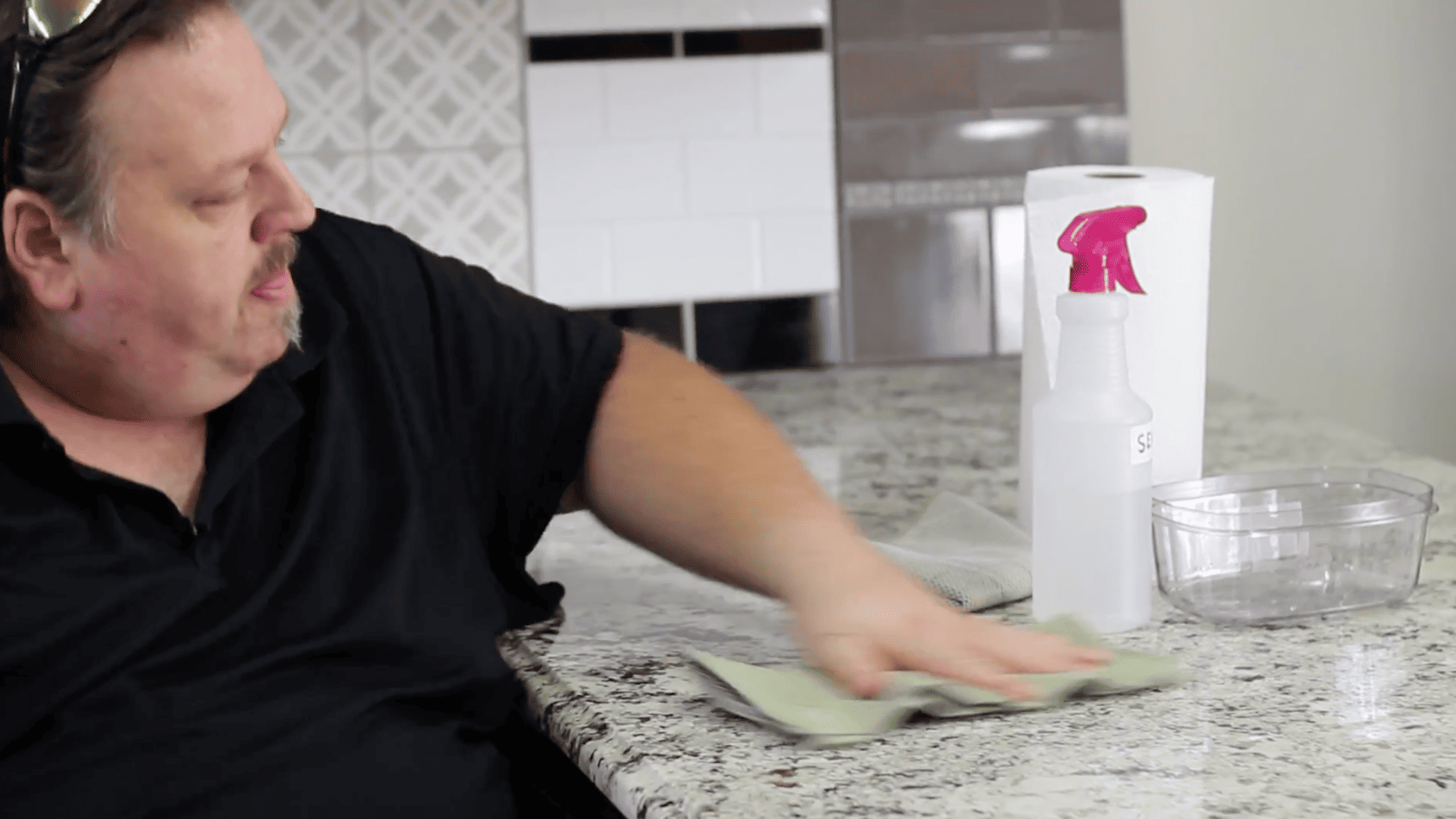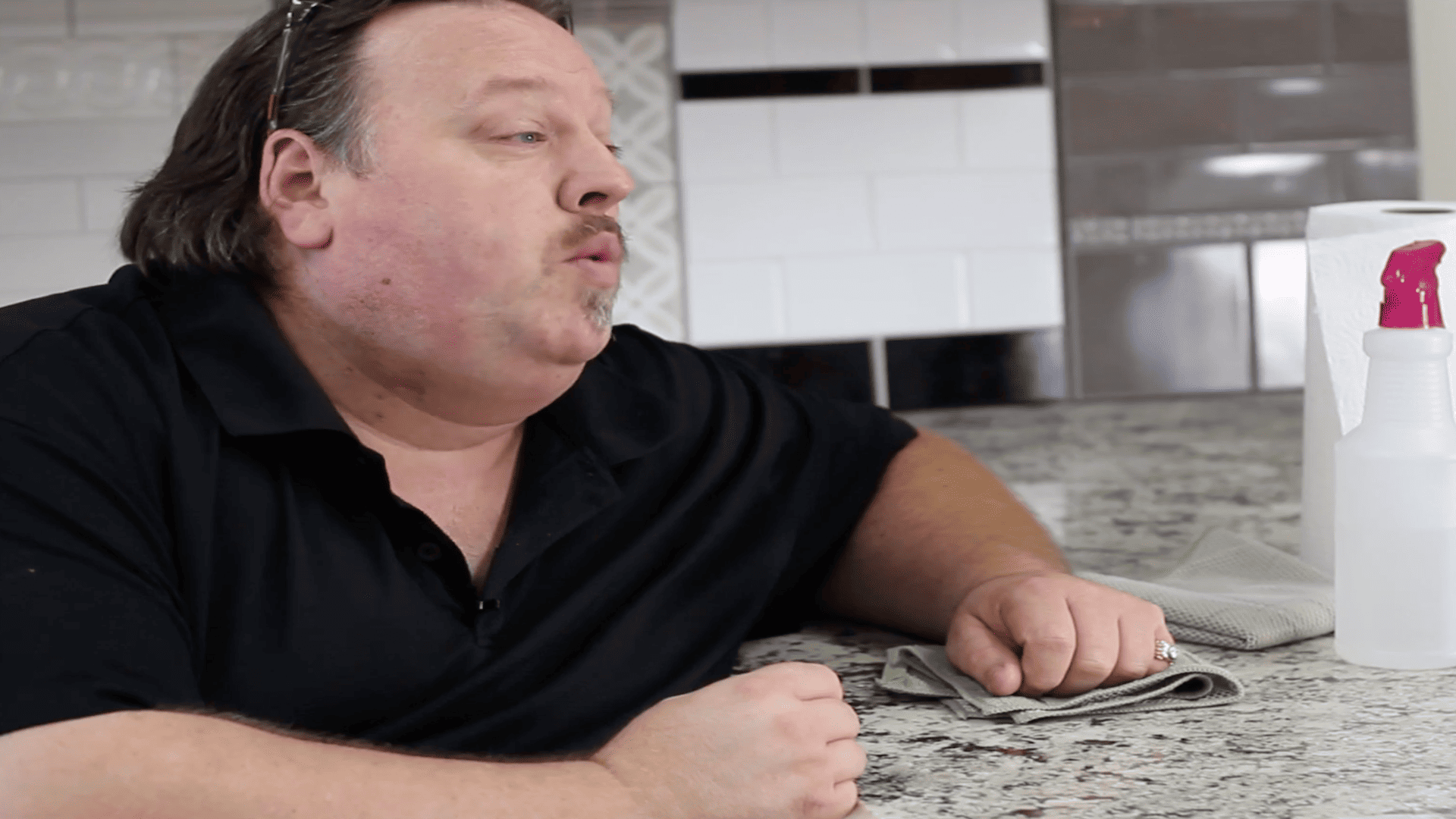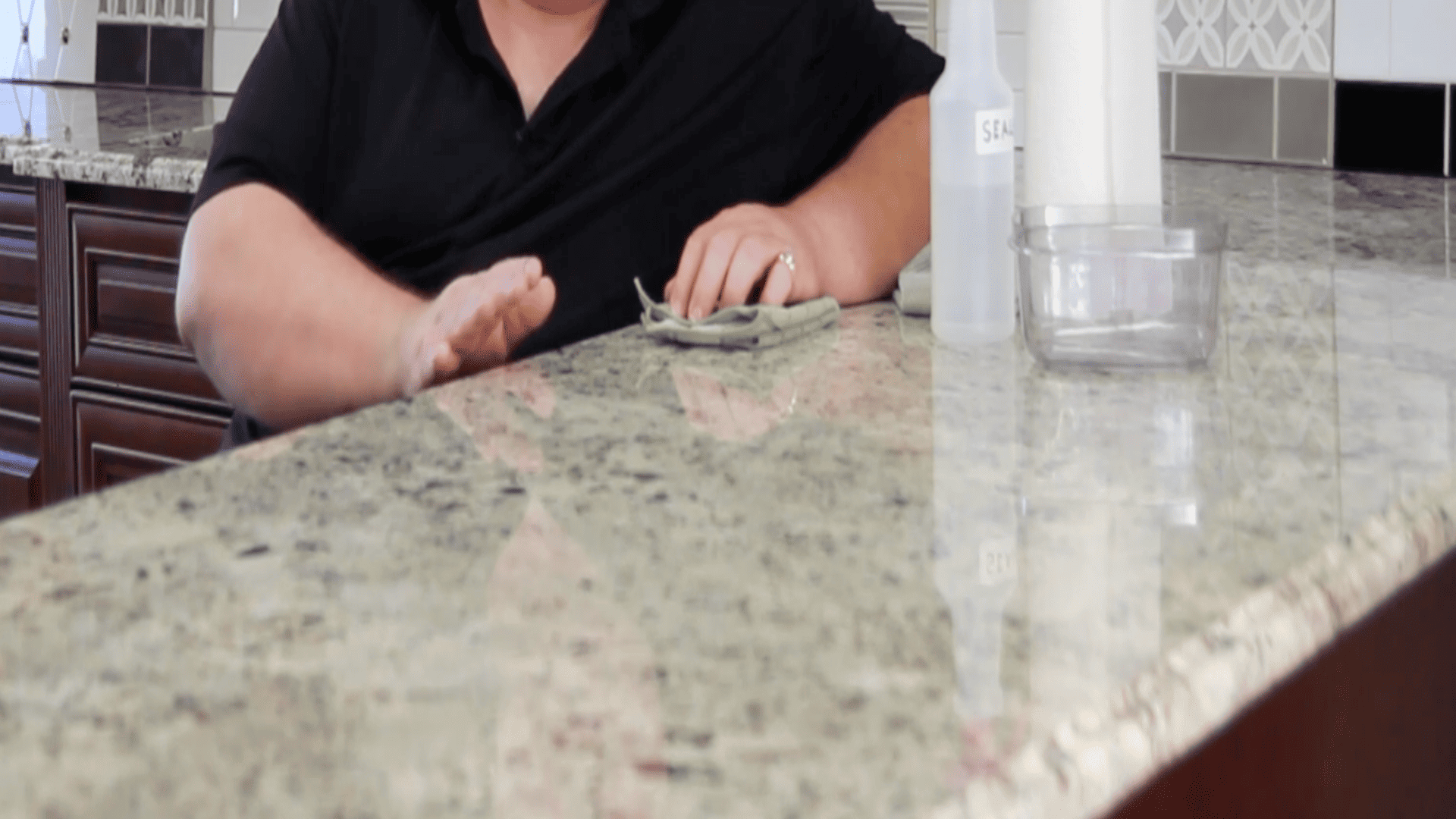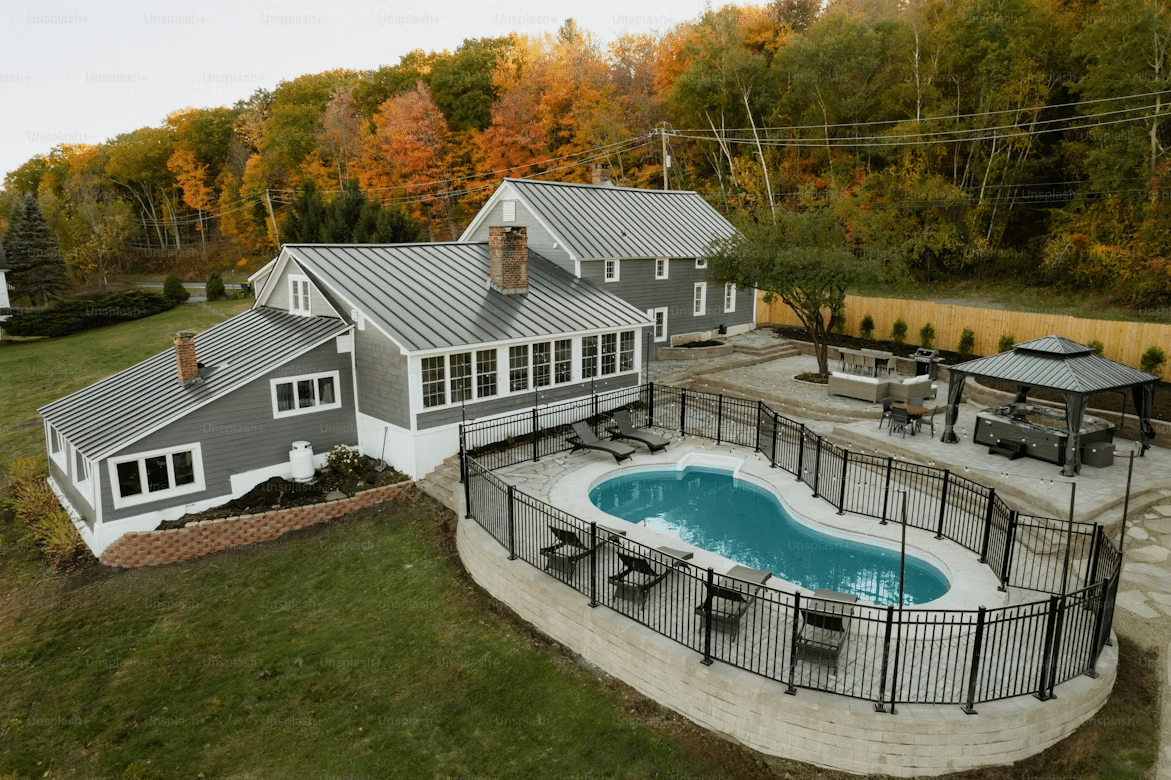When was the last time you sealed your granite countertops?
Most homeowners can’t answer this question, yet unsealed granite absorbs stains permanently. Coffee, wine, and cooking oils soak right into the stone when you don’t know how often to seal granite properly.
Natural granite is porous, which means spills can create marks that are difficult to remove.
Following the proper sealing schedule prevents permanent damage and keeps your countertops looking perfect for years.
This blog shows you exactly when to seal your granite based on its color and the type of kitchen use. You’ll learn the simple water test that tells you if sealing is needed today.
You’ll also receive the complete, step-by-step process, which takes just one hour to complete. Discover which sealers work best and learn how to maintain your granite’s long-term protection.
Why You Need to Seal Granite Countertops?
Granite sealing creates a protective barrier on your stone surface. This process involves applying a special product that fills the tiny pores in granite. The sealer prevents liquids from soaking into the stone.
Natural granite is porous, allowing it to absorb liquids. When you don’t seal granite, spills can create permanent stains. Coffee, wine, and oils are common culprits that leave marks on unsealed surfaces.
Why does granite sealing matter for your countertops?
- Stain protection – Sealed granite resists most spills and stains
- Moisture barrier – Prevents water damage and bacterial growth
- Easier cleaning – Spills wipe away quickly on sealed surfaces
- Longer lifespan – Protected granite looks better for years
The sealing process is straightforward yet crucial. Most granite countertops need this protection to maintain their beauty. Without sealing, even high-quality granite can develop spots and discoloration over time.
Think of sealing like waxing your car. It doesn’t alter the appearance of the granite, but it adds a protective layer. This barrier keeps your granite looking fresh and clean.
How Often Should You Seal Granite Countertops?
The timing for sealing granite depends on color, location, and usage. Use this table to find the right schedule for your specific situation.
White and cream granite requires sealing every 6-8 months in busy kitchens with daily cooking and frequent spills. Light-use kitchens can wait 8-12 months, while bathrooms need sealing every 12-15 months.
Beige and tan granite should be sealed every 8-10 months in heavy-use kitchens. Light-use kitchens can last up to 10-14 months. These colors have medium porosity that needs regular protection.
Gray granite offers balanced porosity and stain resistance. Heavy-use kitchens need sealing every 10-12 months, and light-use kitchens every 12-18 months.
Black and dark granite has the smallest pores and the densest stone structure. Heavy-use kitchens require sealing every 12-18 months, and light-use kitchens every 18-24 months.
Usage definitions:
- Heavy use – Daily cooking, frequent spills, busy family kitchen
- Light use – Occasional cooking, guest kitchen, minimal food prep
What affects how often you should seal granite?
| Factor | Impact on Sealing |
|---|---|
| Granite color | Light colors need sealing every 6-12 months, dark colors every 12-24 months |
| Kitchen usage | Heavy cooking requires more frequent sealing than occasional use |
| Location | Kitchens need sealing 2x more often than bathrooms |
| Spill frequency | Wine, coffee, and oils accelerate the need for resealing |
| Sealing method | Professional sealing lasts 6-12 months longer than DIY applications |
Special situations:
- New granite – Test after 6 months, even if pre-sealed
- Outdoor granite – Seal every 6 months due to weather exposure
- Commercial kitchens – Follow heavy use timing or seal more frequently
The key is to test your granite regularly, rather than following a strict schedule. Environmental factors and usage patterns vary for every home.
How to Tell When Your Granite Needs Sealing?
The water test is the easiest way to check if your granite needs sealing. Pour a small amount of water on your countertop and wait 15 minutes.
Water test results:
- Water beads up – Your sealing is still good
- Water soaks in slowly – Plan to seal within a few months
- Water absorbs quickly – Seal your granite right away
You can also try the oil test by dropping a few drops of cooking oil on the granite. If it darkens the stone within 10 minutes, sealing is needed.
Other signs you need sealing include stains that appear easily from spills, water spots that don’t wipe away completely, surfaces that feel rougher than before, and colors that look dull compared to when new.
Pro tip: Test different areas of your countertop since high-use spots near the sink may need sealing sooner than other areas.
How to Seal Granite: Easy DIY Steps
Sealing granite yourself is straightforward when you follow these proven steps. This process takes about one hour for average-sized countertops, plus waiting time for proper curing.
Tools and Materials Needed:
- Granite sealer from the hardware store
- Clean terry cloth towels
- Clean rags for spreading
- Timer
- Granite cleaner
Step 1: Test and Prepare Your Surface
Pour a quarter-sized amount of tap water onto your countertop. Good sealing shows water beading up like raindrops on a car.
If water soaks into the stone within minutes, your granite needs sealing immediately. Clean your countertop thoroughly with granite cleaner and let it dry completely before starting.
Common mistake: Starting with a dirty surface blocks sealer absorption. Even small amounts of grease, soap residue, or food particles can prevent proper sealer penetration, leading to uneven protection and potential failure of the sealing process.
Step 2: Apply Sealer in Sections
Work in 3-foot sections rather than attempting the entire countertop at once. Spray the sealer liberally across your working section until well-covered.
Use the back of a clean rag to feather the sealer across the surface smoothly – you’re spreading it evenly, not wiping it off.
Common mistake: Using too much sealer creates streaks and buildup. Excessive sealer doesn’t provide better protection – it actually creates sticky residue that attracts dirt and leaves visible streaks on your granite surface.
Step 3: Wait and Wipe (15 Minutes)
Set a timer and wait exactly 15 minutes for proper absorption. After 15 minutes, use a clean terry cloth towel to wipe the entire section and give it a light buff. This removes excess sealer while leaving the absorbed sealer in the stone.
Common mistake: Rushing the timing reduces sealer effectiveness. The 15-minute absorption period is crucial for the sealer to penetrate deep into the granite’s pores. Wiping too early removes sealer before it can properly bond with the stone.
Step 4: Handle Haze and Final Waiting
Dark granite may show a light haze; this is normal. If you see haze, spray a small amount of sealer on the area, wait 5 minutes, then wipe again. Once all sections are complete, wait 30 minutes before using your countertop.
Common mistake: Not buffing excess sealer leaves hazy spots. Failing to properly remove excess sealer creates a cloudy film that dulls the granite’s natural shine and can feel sticky to the touch.
Step 5: Allow Full Curing
Avoid cleaning your countertops for 48 hours after sealing. This curing period allows the sealer to form its strongest bond with the granite. After 48 hours, return to your normal cleaning routine.
Common mistake: Cleaning too soon weakens the sealer bond. Using cleaning products or water on freshly sealed granite can disrupt the curing process and create weak spots in the protective barrier.
Video Tutorial
I’d like to give credit to Granite & Marble Specialties for their informative video, as a reference for this guide.
How to Choose the Right Granite Sealer?
The right sealer makes all the difference in protection and longevity. Select penetrating sealers that penetrate the stone rather than topical ones that form surface films.
- Look for products with food-safe certification if you’re sealing kitchen countertops.
- Choose sealers with water and oil stain resistance that last at least 1-2 years.
- Select products with easy-to-use spray-on application and clear instructions.
- Expect to spend $15-35 per bottle, with one quart covering 100-200 square feet.
- Skip wax-based products, cheap generic brands, and topical sealers that peel over time.
Caring for Sealed Granite Countertops
Simple daily care keeps your sealed granite looking great.
| Care Type | Instructions |
|---|---|
| Daily routine | Clean spills immediately using granite cleaner or a mild dish soap. Dry surfaces thoroughly and use only microfiber cloths to avoid scratches. |
| Products to avoid | Never use vinegar, lemon juice, bleach, harsh chemicals, or abrasive scrubbers on granite. |
| Weekly checks | Test high-use areas with water drops to monitor sealer condition. |
| Monthly care | Polish if desired, and always use trivets under hot pans and appliances. |
| Stain removal | Create a baking soda paste, apply it overnight, and then rinse clean. |
Final Thoughts
Sealing granite at the right intervals keeps your countertops stain-free and beautiful. Kitchen granite needs attention every 6-18 months, depending on the color and use.
Skip sealing and you’ll face permanent stains from everyday spills. Coffee rings, wine spots, and oil marks become a permanent part of your countertop.
Learning how often to seal granite protects thousands of dollars in stone investment.
Check your granite this week with the 15-minute water test. Water that soaks in means sealing time has arrived. Buy a penetrating sealer from any home improvement store and complete the process in one afternoon.
Mark your calendar for the next sealing based on your granite type and kitchen activity level. Proper timing keeps your granite looking like new for decades.
Frequently Asked Questions
Can You Seal Granite Too Much?
Yes, Over-Sealing Creates Buildup and Hazy Spots. Test with Water Drops Every 6-12 Months Instead of Sealing on Schedule.
How Often Should You Clean Granite Countertops?
Clean Granite Daily After Use with Mild Soap and Water. Wipe Spills Immediately to Prevent Stains on Sealed Surfaces.
How to Strip and Reseal Granite Countertops
Use granite stripper, wait 10 minutes, scrub gently, rinse clean, let dry completely, then apply new sealer following normal steps.

